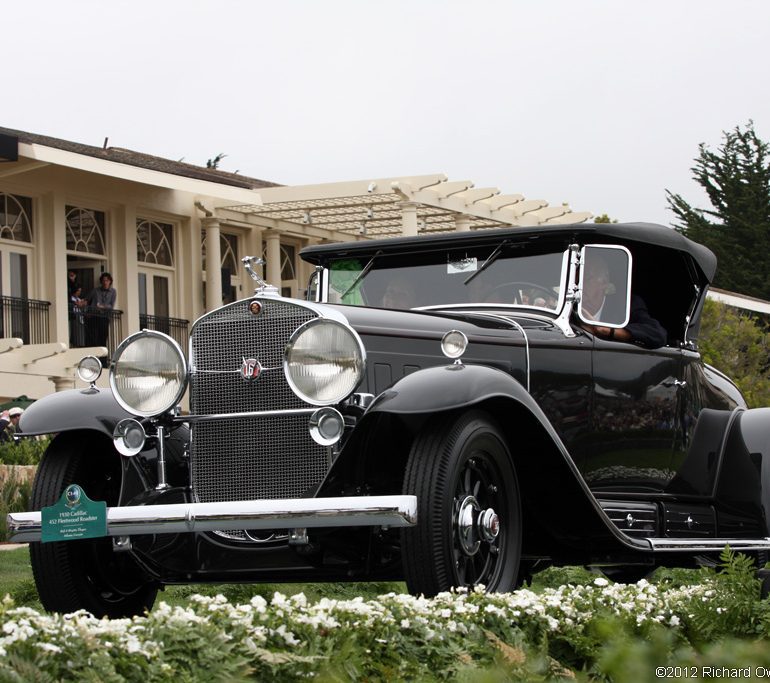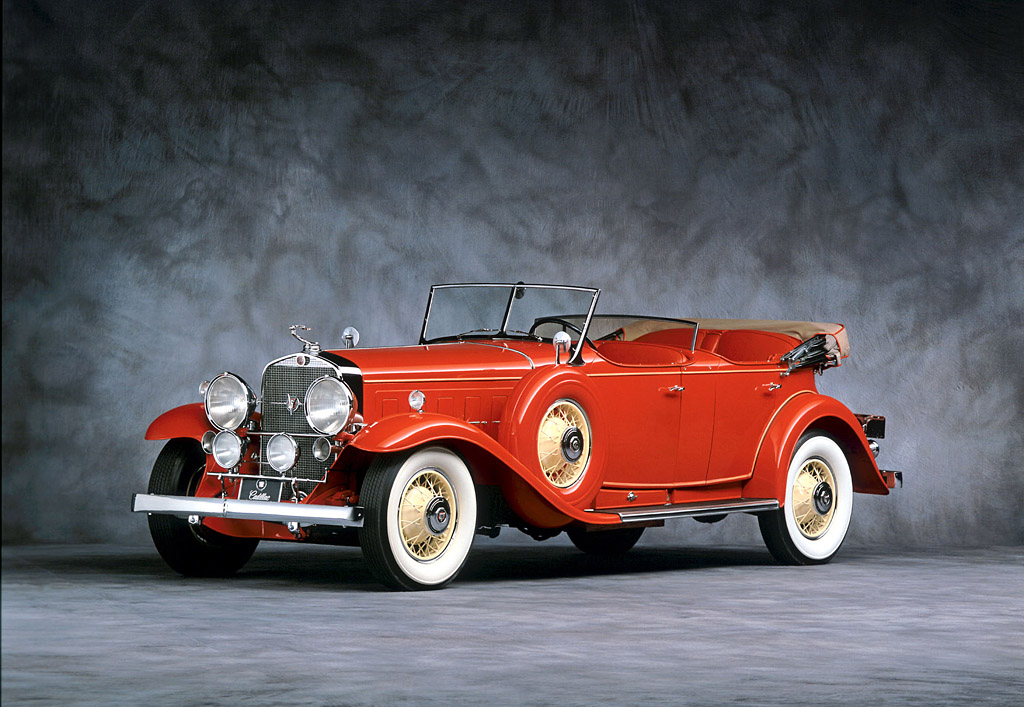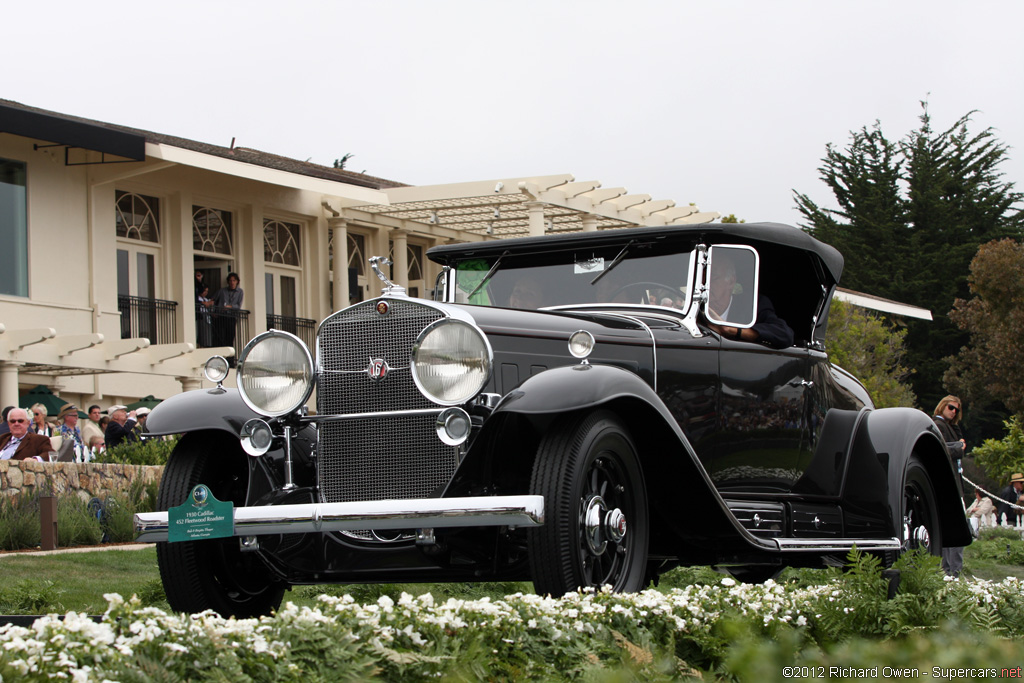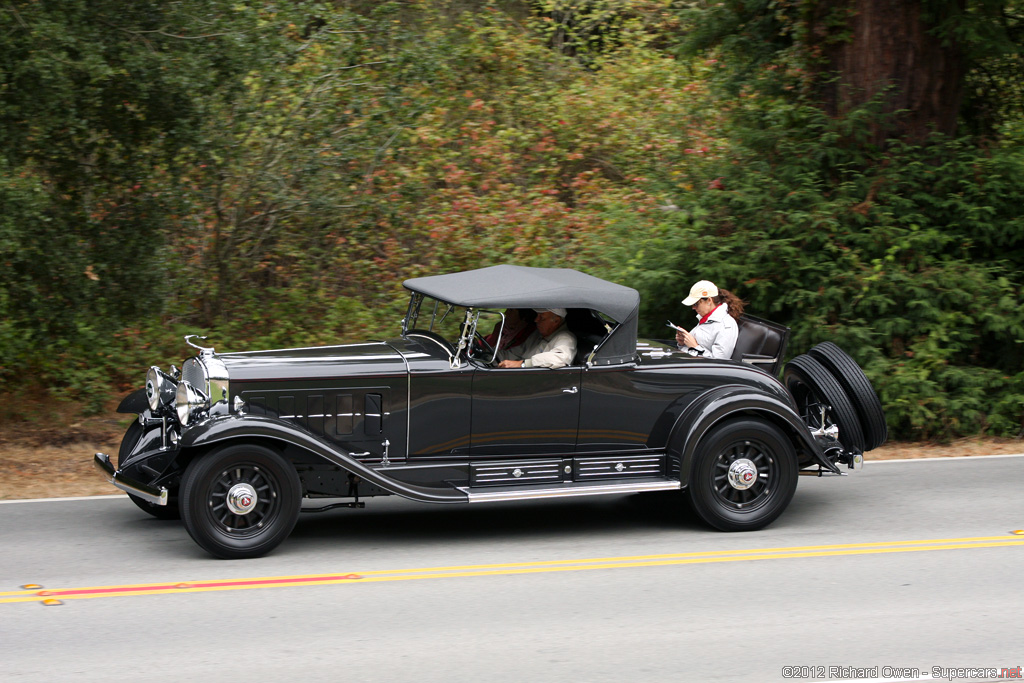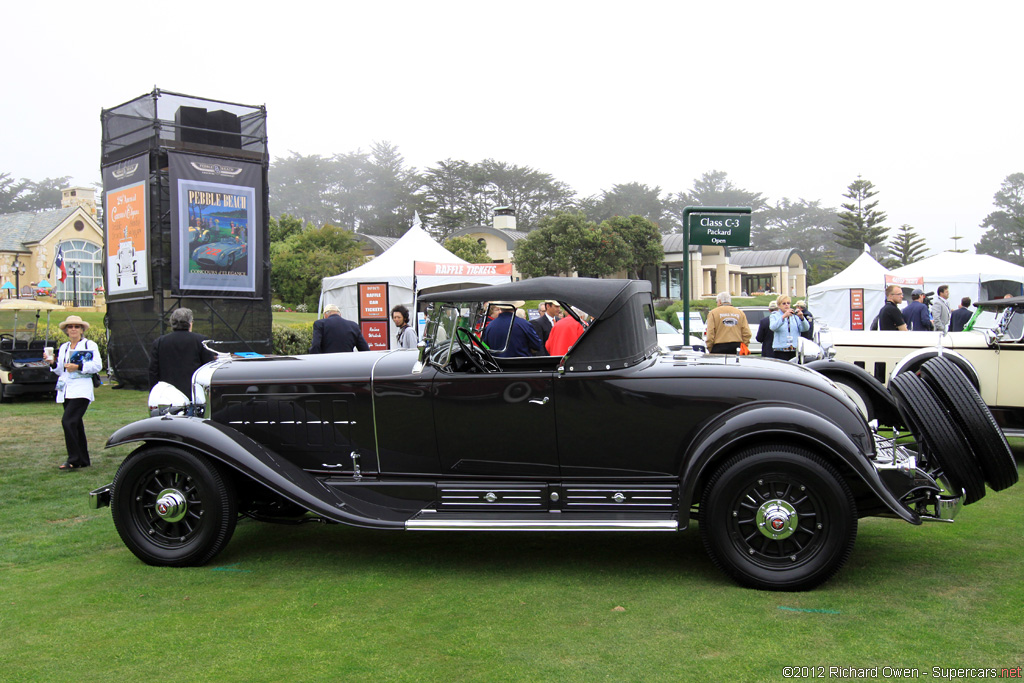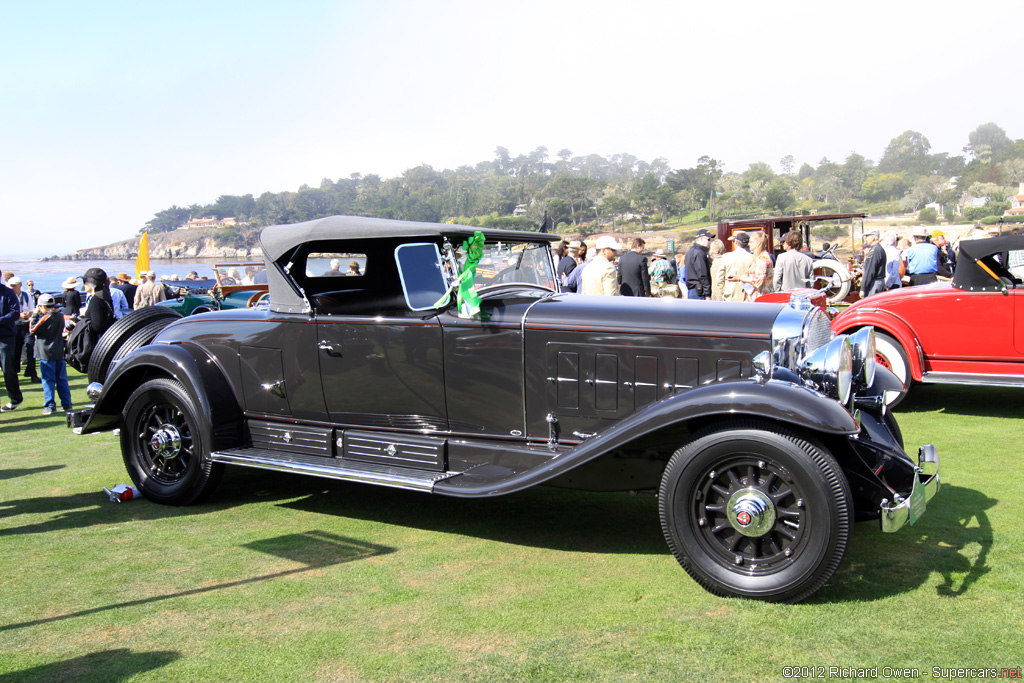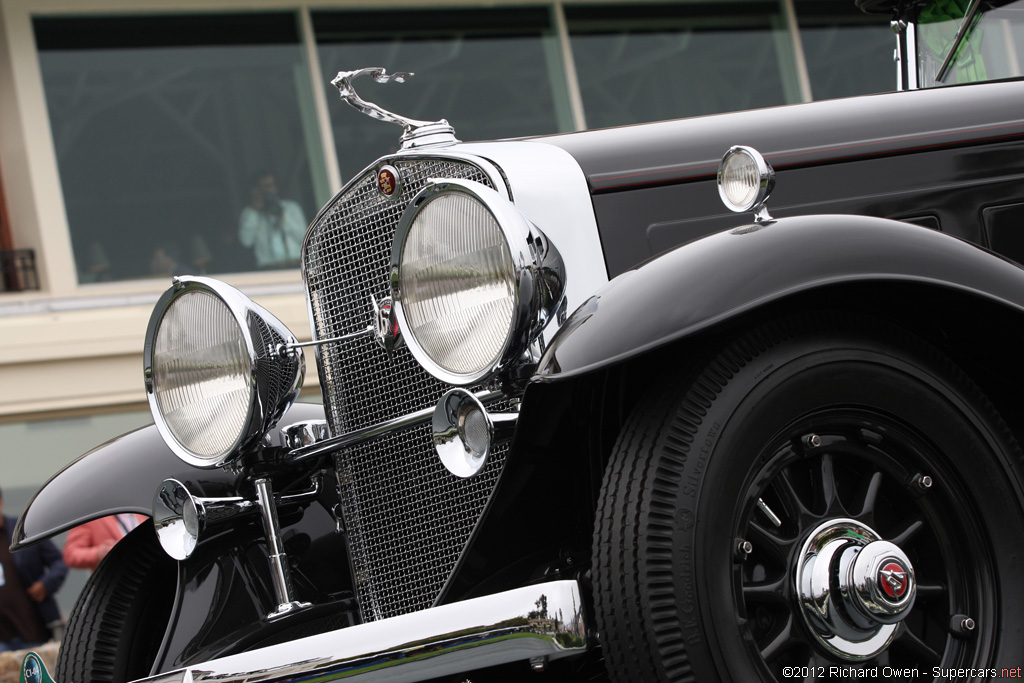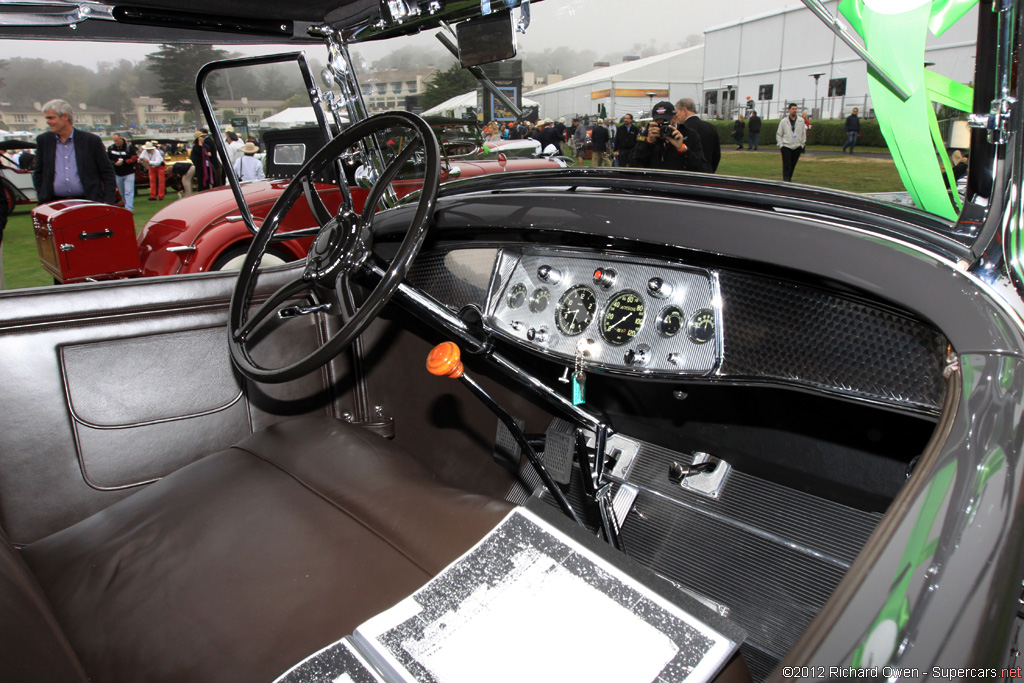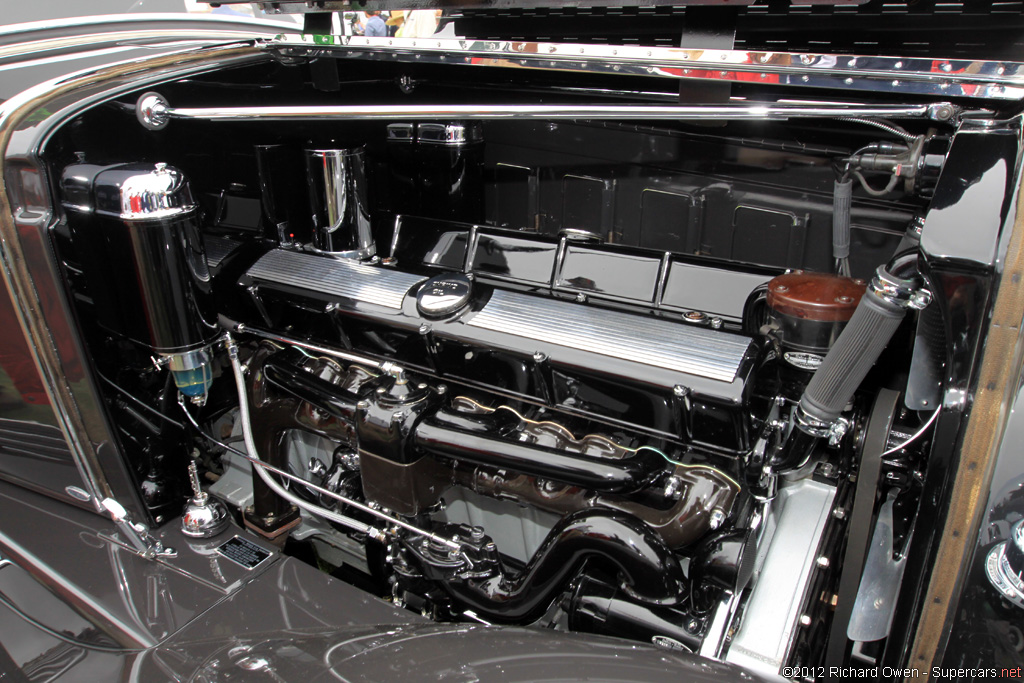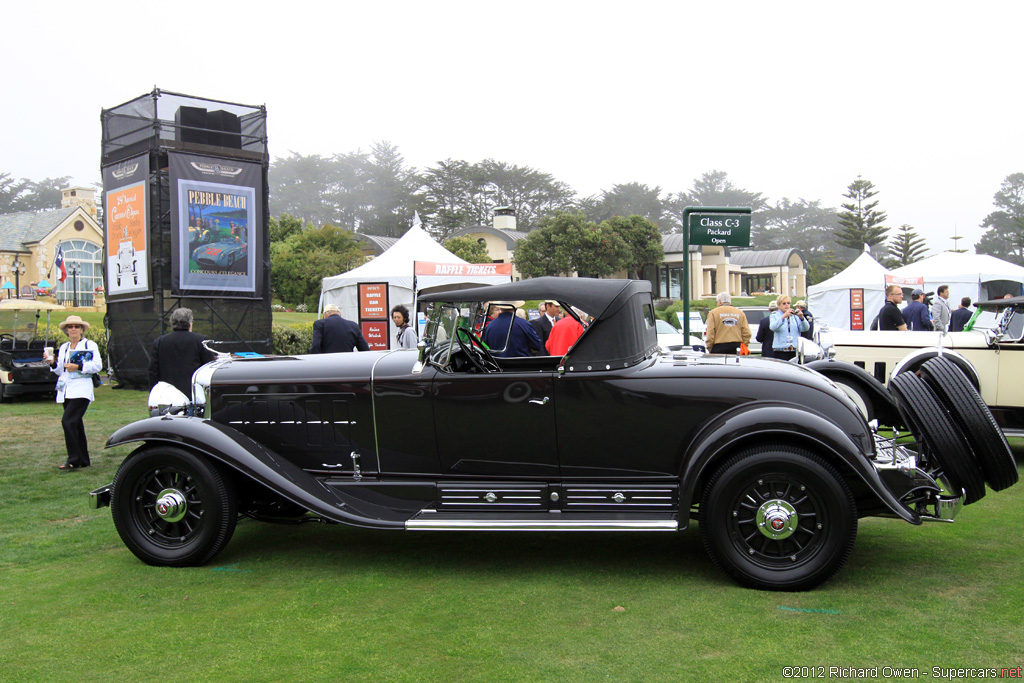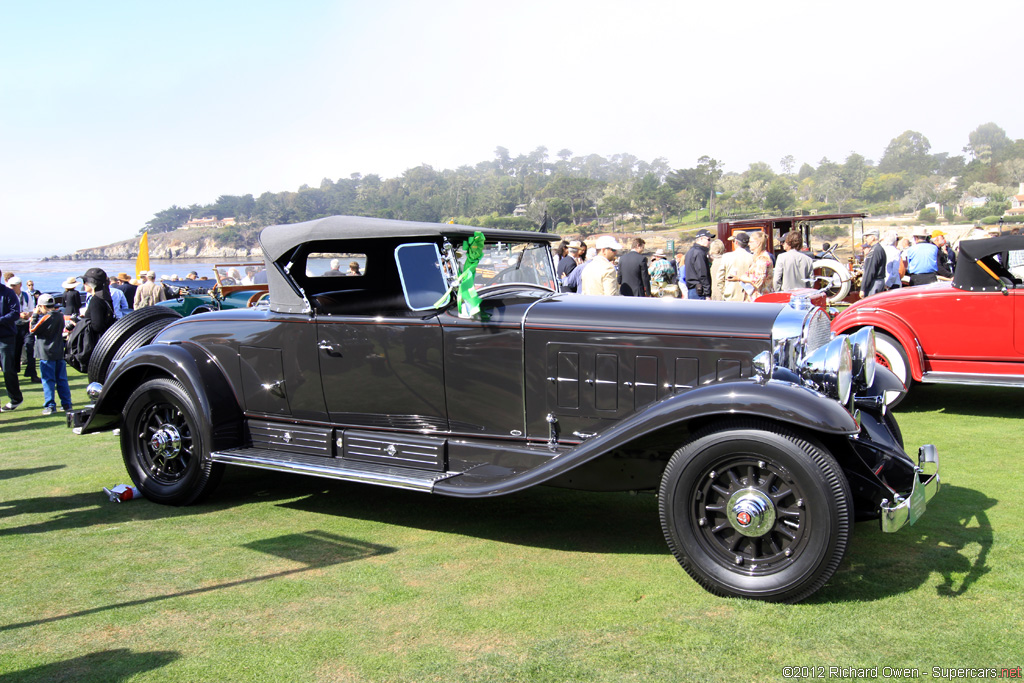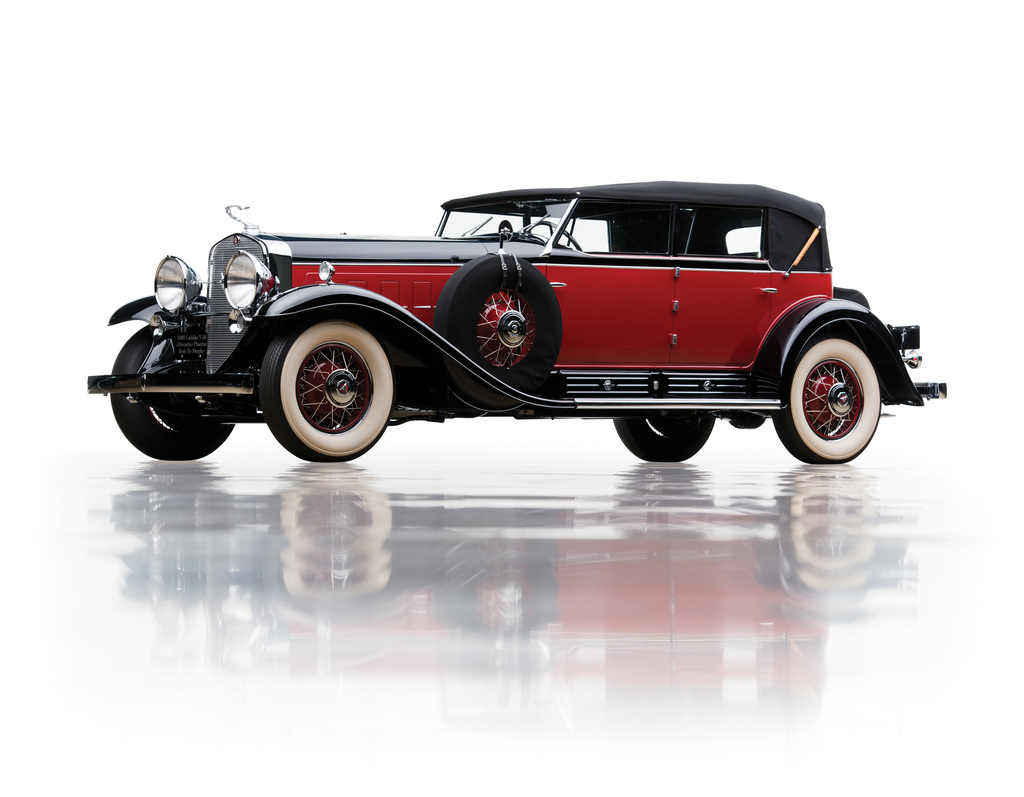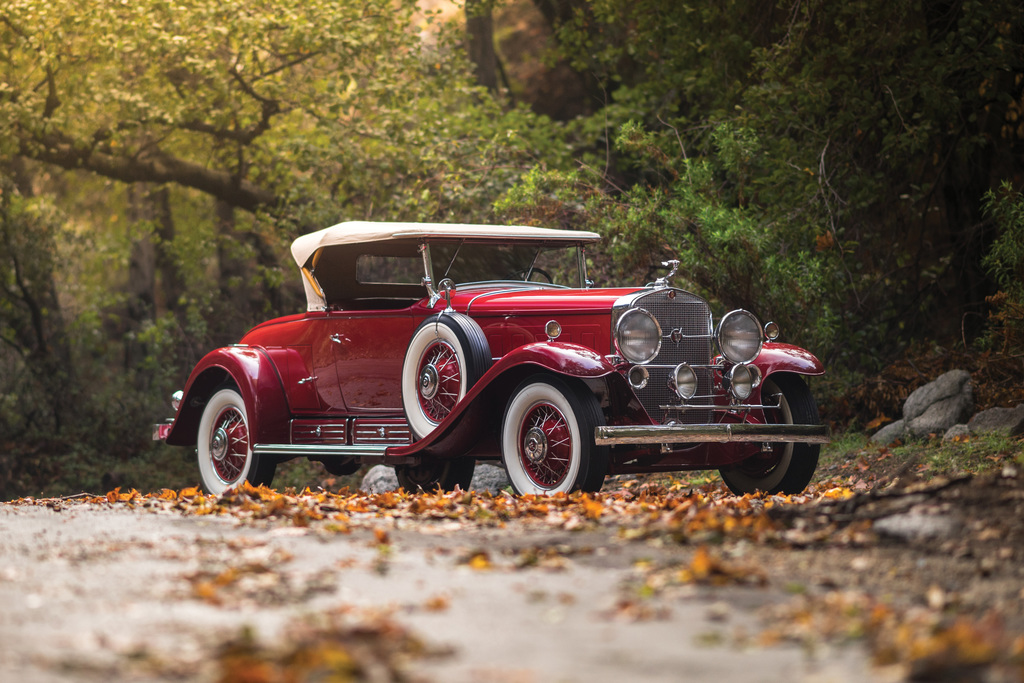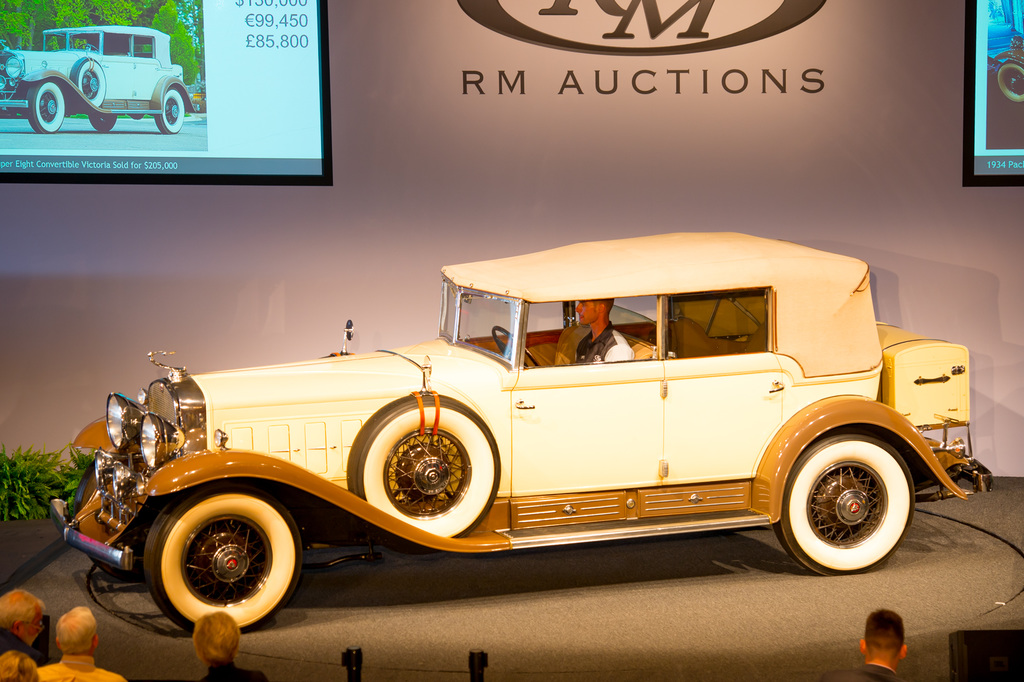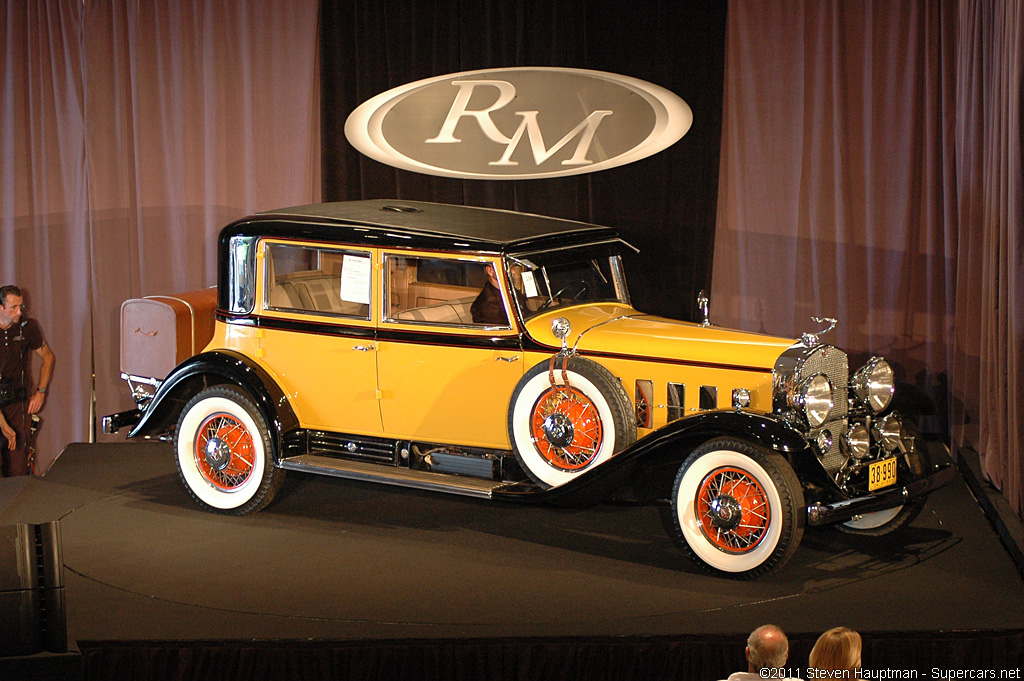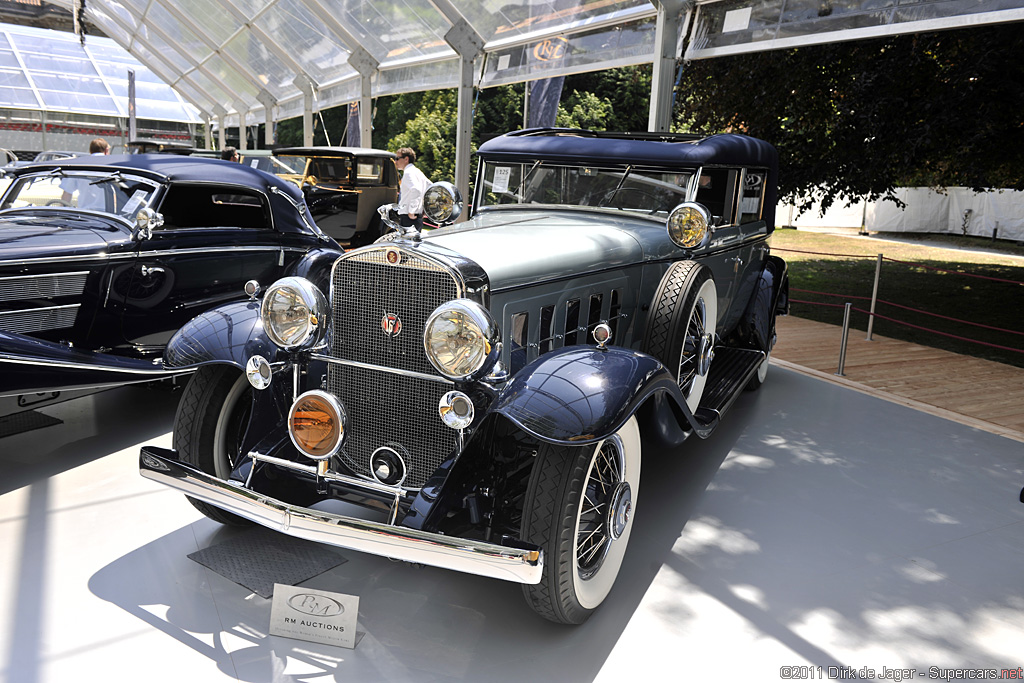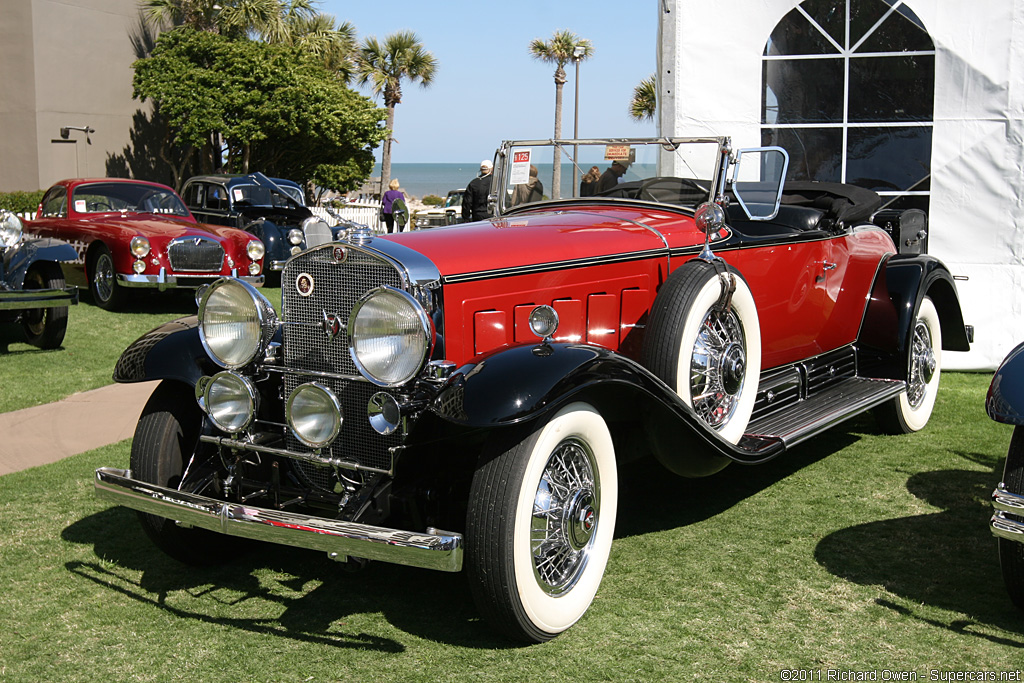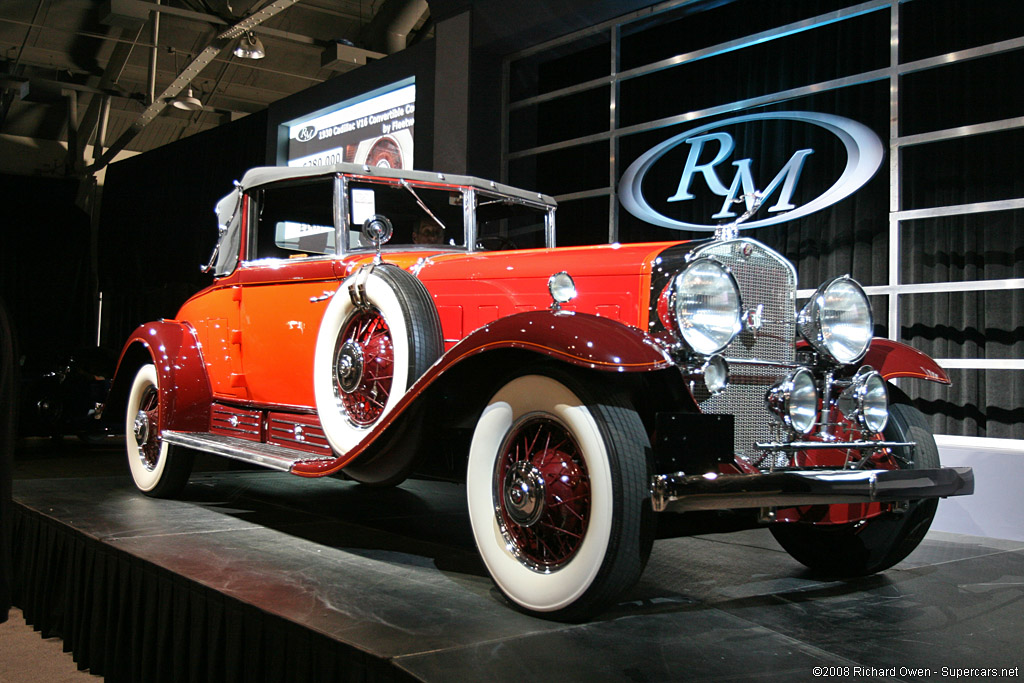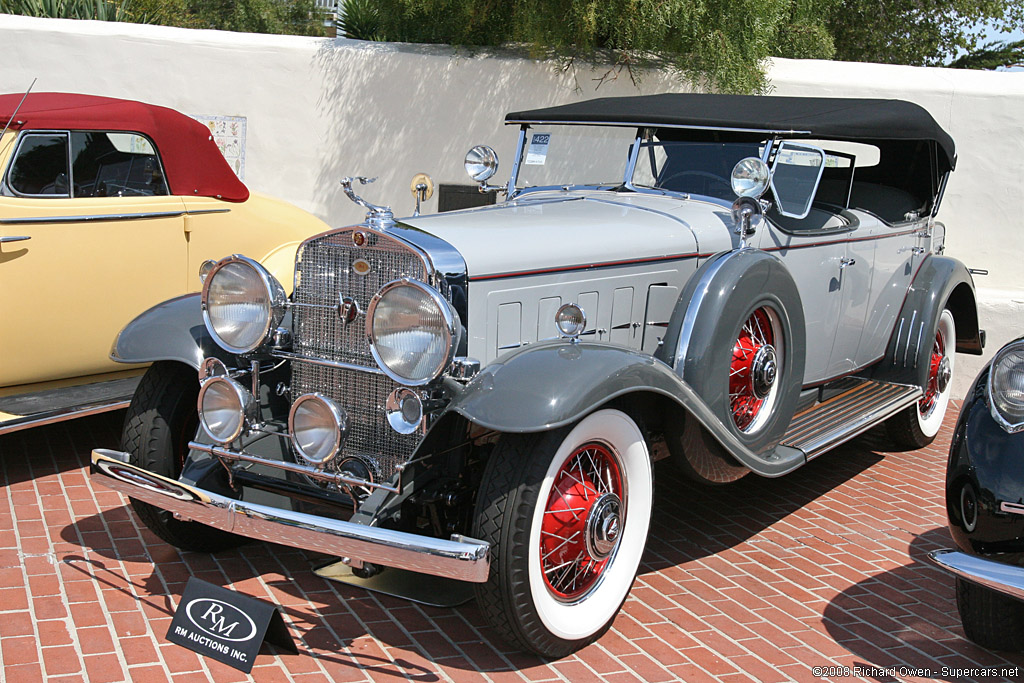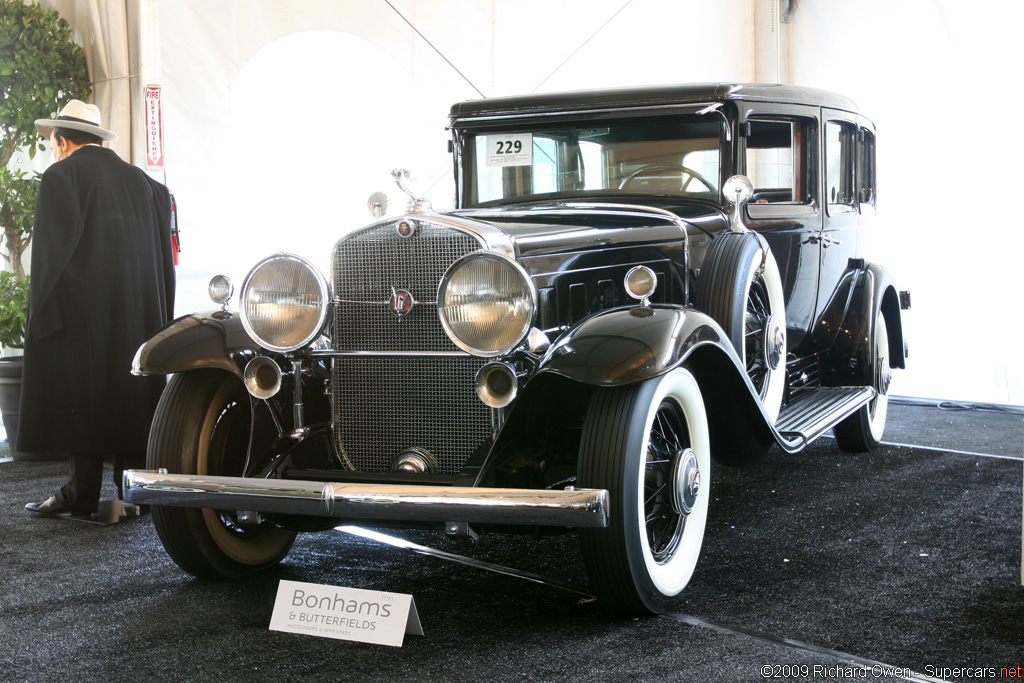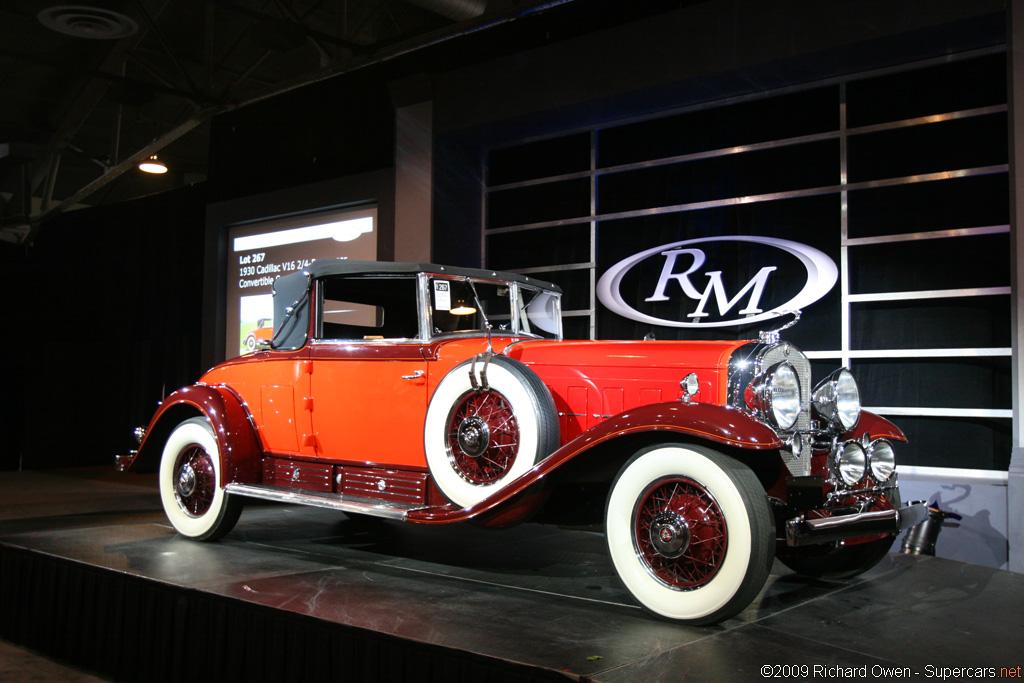1930 Cadillac Series 452-A V16
One car which propelled the Cadillac name more than any other was the V16. Built to each customer’s individual taste, it became an American icon of prestige and helped the company out-perform Packard and their V12. Cadillac initially prepared the V16 to prodigiously power its flagship model with more cylinders than anything else available. The introductory brochure proudly claimed “Sixteen-cylinder powering, complete individuality in style ”that, in brief, is the story of the Cadillac V16.”
At a time when a custom coach-built body was a symbol of status and wealth, the V16 became the one of the most revered chassis. Cadillac wanted the engine to be as vibration-free as possible, and eight combustion cycles per crankshaft revolution combined with balanced internals meant that a V16 was one of the best available packages.
As early as 1926, Ex-Marmon engineer Owen Nacker designed the V16 from two straight-8 Buick units that shared a common crankcase and crankshaft. Each bank was independently operated and only shared a common, center mounted camshaft which operated the valves with pushrods. The 45 degree angle between the banks was unusually narrow to fit inside the chassis. It was named after its 452 inch cubic displacement and produced 185 bhp which was good for 100 mph. It also used a unique hydraulic valve silencing system that reduced noise and was a novel feature in its day.
Chassis details were straight forward and borrowed from Cadillac’s 353/355 line. This included a huge steel ladder frame, rigid axles and hydraulically powered drums brakes to help with the large weight of the car.
See full Cadillac Series 452-A V16 Gallery
Cadillac general manager Lawrence Fisher and GM’s stylist Harley Earl were largely responsible for the V16s styling. Most of the cars were bodied by Fleetwood in Pennsylvania which was later purchased and moved to Michigan by GM to keep business in-house. The customer could choose between 70 or so available bodies that were elaborately finished and all highly individualized in detail. If that wasn’t enough, Cadillac could also provide a bare chassis to be fitted by the independent styling house of the customer’s choice. These arrangements helped Cadillac excel in the luxury custom market.
The engine bay was as finely detailed as many of the bodies that covered it. Chrome and polished aluminum, were used and the wiring loom was neatly concealed.
The V16 was released right after the stock market crash at the New York Auto Show on January 4th, 1930. It became the first production road car to use the V16 which both Marmon and Peerless were also trying to launch. The first V16 shown was a Madame X Landaulet that was designed by Harley Earl a year earlier for two 314-B V8 chassis. The Landaulet was a limousine with division glass, a leather roof and a folding rear roof portion. Following these two special cars, other 4-door Madame Xs were built by Fleetwood in Pennsylvania and these were among the most expensive bodies available.
Despite difficult times, and a price tag higher than any previous Cadillac, the V16 was ordered in huge numbers throughout 1930. GM paraded six cars for European tour and the cars received acclaim by both the press and public. Production reached 2000 examples by June, but by the end of the year, the economic depression nearly hauled sales.
During an eleven year production, 4076 V16s were constructed in several series. Minor upgrades separated the types which included 452, 452B, 452C, 452D. In 1936 they became the Series 60 and Series 90 a year later. These final production cars used a new wide-angle V16 that offered a much lower profile, but kept the same power rating. This new unit also had a square bore and stroke that lower piston speed and crankshaft stress.
After the initial flourish in 1930, production grinded away for ten years with only fifty units made per year. Later, Cadillac reverted to their V12 unit but only after the V16 had made its lasting mark. In the end, Cadillac lost money on every car sold, but it was worth the cost of propelling the marque as a whole. It was estimated the V16 cost Cadillac 54 million dollars.
To emphasize the V16’s place in Cadillac history, a one-of show car was made for the 2003 Detroit Auto Show. Called the ‘Sixteen Concept’, it used a 13.6 liter engine with around and incredible 1000 bhp and 1000 ft lbs of toque on tap. This show car was part of GM’s initiative to re-establish Cadillac as GM’s top brand. Due to its excessive length, the V16 was not feasible in modern cars.
Cadillac Series 452-A V16 Gallery
See full Cadillac Series 452-A V16 Gallery
In Detail
| type | Series Production Car |
| production years | 1930 – 1931 |
| built at | USA |
| price $ | $ 6,650 |
| engine | 45° V16 |
| position | Front Longitudinal |
| aspiration | Natural |
| block material | Cast Iron |
| valvetrain | Pushrod OHV, 2 Valves per Cyl |
| fuel feed | Twin Cadillac Carburettors |
| displacement | 7412 cc / 452.3 in³ |
| bore | 76.2 mm / 3.0 in |
| stroke | 101.6 mm / 4.0 in |
| compression | 5.5:1 |
| engine designer | Owen Nacker |
| power | 130.5 kw / 175 bhp @ 3400 rpm |
| specific output | 23.61 bhp per litre |
| bhp/weight | 62.23 bhp per tonne |
| torque | 432.51 nm / 319 ft lbs @ 1700 rpm |
| body / frame | Body over Steel Ladder-Type Frame |
| driven wheels | RWD |
| front tires | 7.5×19 |
| rear tires | 7.5×19 |
| front brakes | Drums w/Hydrualic Assist |
| rear brakes | Drums w/Hydrualic Assist |
| steering | Worm & Roller |
| f suspension | Rigid Axle w/Semi-Elliptic Leaf Springs, Hydrualic Dampers |
| r suspension | Live Axle w/Semi-Elliptic Leaf Springs, Hydrualic Dampers |
| curb weight | 2812 kg / 6199 lbs |
| wheelbase | 3759 mm / 148.0 in |
| front track | 1500 mm / 59.1 in |
| rear track | 1580 mm / 62.2 in |
| length | 5730 mm / 225.6 in |
| width | 1890 mm / 74.4 in |
| transmission | 3-Speed Manual |
| gear ratios | 3.47:1, 1.48:1, 1.10:1 |
| final drive | 3.47:1 |
| 0 – 60 mph | ~24 seconds |
Auction Sales History
1930 Cadillac V-16 Convertible Sedan by Murphy 700991 – sold for $1,925,000 Exceptional, one-off, custom California coachwork. Built for General Motors VIP and horseracing legend Charles Howard. A long-term part of some of the world’s greatest collections. Numerous Best in Class victories, including at Pebble Beach. One of the most important Cadillac V-16s. Auction Source: Paul & Chris Andrews Collection by RM Sotheby’s
1931 Cadillac V-16 Roadster – sold for $319,000 The car shown here is believed to have been built on an original 1931 V-16 chassis with engine number 702891. Its bodywork was crafted to exacting original specifications, rather than using a V-8 roadster body, as is common for these cars. The V-8 body is very similar to the V-16, but it will not mate perfectly with the V-16 cowl, resulting in a rather awkward appearance. By carefully building a body from scratch. Auction Source: Arizona 2015 by RM Auctions
1930 Cadillac V-16 Fleetwood All-Weather Phaeton – sold for $159,500 The car offered here was the 34th of 250 V-16s built from 1930–1931, and the coachwork on this four-door convertible all-weather phaeton was completed by Fleetwood. Importantly, this body is distinguished as one of the earliest surviving examples; it was built by Fleetwood’s original Pennsylvania factory and is distinguished by its speedboat-like vee’d windshield. A copy of the original build sheet, which accompanies the Cadillac. Auction Source: 2013 St. John’s Auction
1931 Cadillac Series 452 V-16 Special Dual Cowl Phaeton – sold for $465,000 Style 4260. One of three examples originally built with dual cowls. Original engine, body, and chassis. Single ownership since 1988. Of the Style 4260 phaetons built, fifty-two were constructed in 1930 and thirty-three in 1931; a mere three of these were originally equipped as dual cowl examples, making this a unique acquisition opportunity for a car that has good pedigree. Auction Source: Monterey 2012 by RM Auctions
1930 Cadillac Sixteen Madame X Club Sedan – sold for $148,500 Purchased by the current owner in November 1983, this Madame X Sedan was treated to a complete restoration by A&A Classics in 1992. Its history has been documented from new and includes First Place in Cadillac LaSalle Club national competition. It was the subject of a feature article in Car Collector magazine in 1981, a copy of which goes to the new owner. The magazine, on which the car is featured on the cover with a two-page centerfold. Auction Source: 2011 St. John’s Auction by RM
1930 Cadillac V-16 Saoutchik Convertible Berline – sold for €307,500 Cadillac’s extraordinary sixteen-cylinder tour de force. Unique, rare, one-off Saoutchik coachwork with several special features. Remarkable full-length sunroof. Superb Fran Roxas restoration. Multiple awards, including two class awards at Pebble Beach. Auction Source: RM 2011 Villa d’Este Auction
1930 Cadillac Sixteen Fleetwood Roadster 700802 – sold for $506,000 Jack Tallman always wanted a Cadillac V-16 roadster. He told his father that one day he’d have a red-and-black one. He eventually discovered this car and purchased it in 1960. A nut-and-bolt restoration followed, winning AACA Junior and Senior Firsts by 1963. It took a National First in 1964. Two years later, it won a national award in its class and was shipped to the New York Auto Show for display. Auction Source: 2011 Amelia Island Auction by RM Auctions
1930 Cadillac V16 Convertible Coupe by Fleetwood – sold for $324,500 This convertible coupe, style 4335, priced between the 4302 and the 4235 at $5,900, was unusual for four reasons. First, the car was built in the Fleetwood, Pennsylvania factory before Fleetwood was moved to Detroit in December 1930 and therefore was a truly coachbuilt car. Second, the car sports a unique split “V” swing-out windshield with a seven-degree rake which provided significantly more interior room. Auction Source: 2008 Meadow Brook Concours
1930 Cadillac V16 Sport Phaeton 702401 – did not sell for $475,000 Original Cadillac shipping documentation confirms the provenance of this car as one of the original sixteen-cylinder Sport Phaetons (style 4260). Fitted with body number 42, it was delivered to Cadillac’s Philadelphia branch on July 19, 1930. As often happened in the early days of the Depression, the cars were difficult to sell, but finally on June 29, 1931 it was diverted to the New York City branch for sale to a client. Auction Source: 2008 Monterey Preview
1930 Cadillac Series 452 V-16 Armored Imperial Sedan Chassis no. 701617 – sold for $309,500 Its modifications mark it as something truly special. Based on a seven-passenger Imperial Sedan by Fleetwood its doors are reinforced with ¼” steel armor. All the glass is 5-ply laminated. The side windows have round ports cut in them, and they’re not for ventilation. A police band radio nestles under the dashboard conveniently above the front seat passenger’s feet. One who demanded this level of luxury, who needed this level of protection. Auction Source: 2009 Bonhams Exceptional Motorcars at Quail Lodge Resort
1930 Cadillac V16 2/4-Passenger Convertible Coupe – did not sell for $210,000 This Convertible Coupe, Style 4335, priced between the 4302 and the 4235 at $5,900, is quite unusual for four reasons. First, the car was built in the Fleetwood, Pennsylvania factory before the Fleetwood operation was moved to Detroit in December 1930, truly making it a custom coachbuilt car. Second, the car sports a unique split “V”-style swing-out windshield with a seven-degree rake, which provided significantly more interior room. Auction Source: 2009 Meadow Brook Concours


